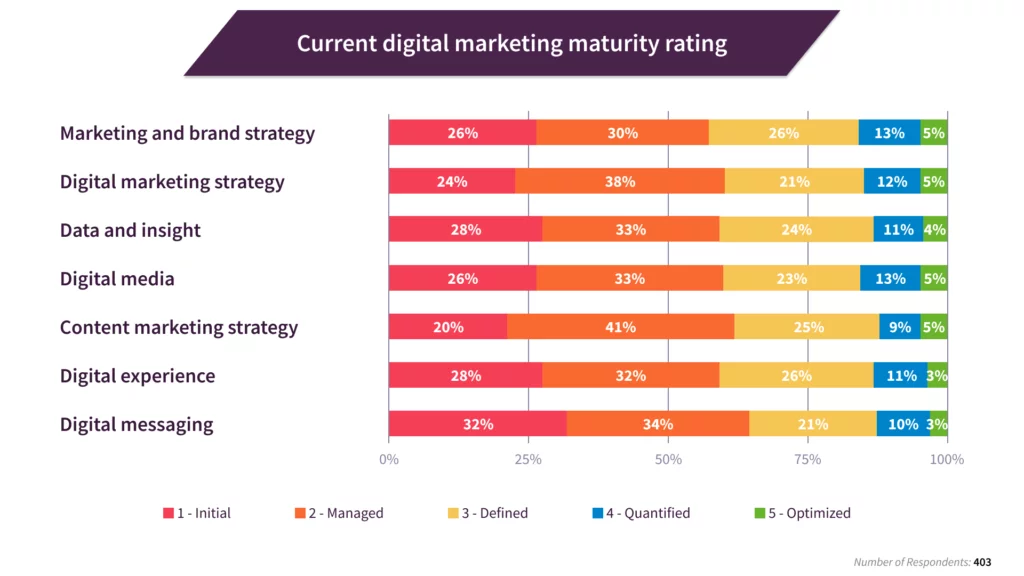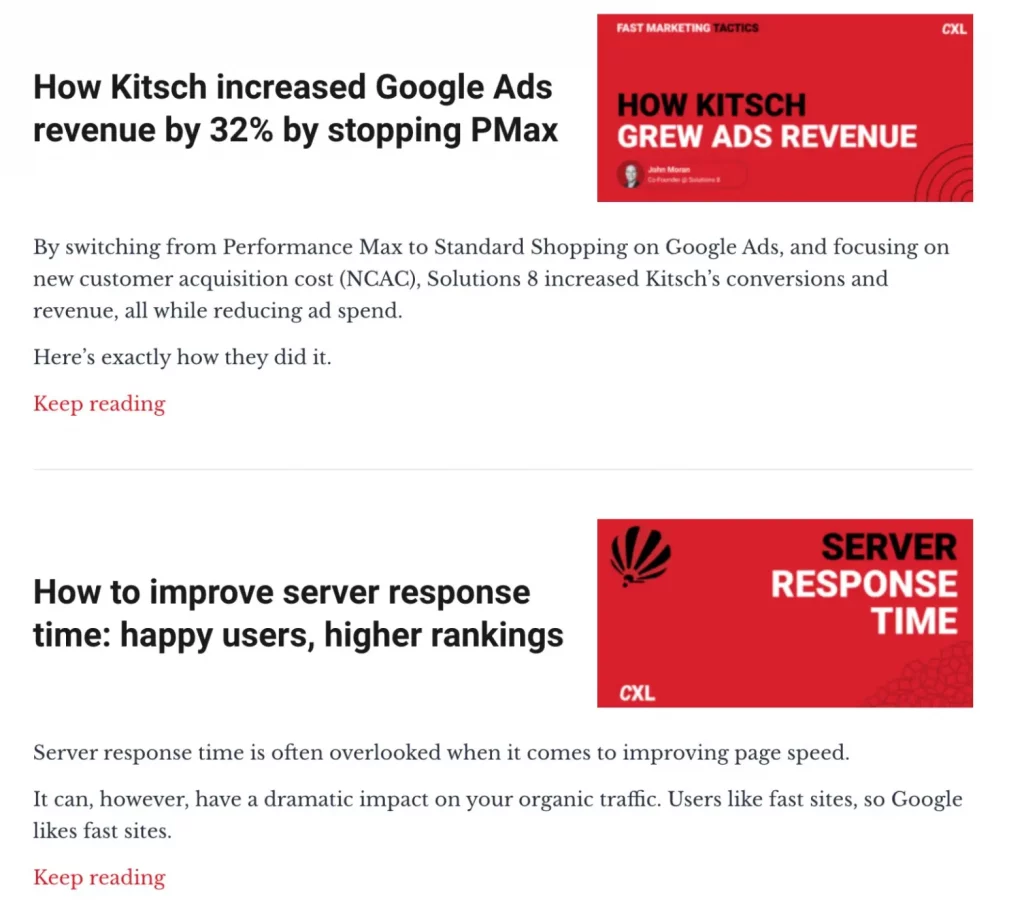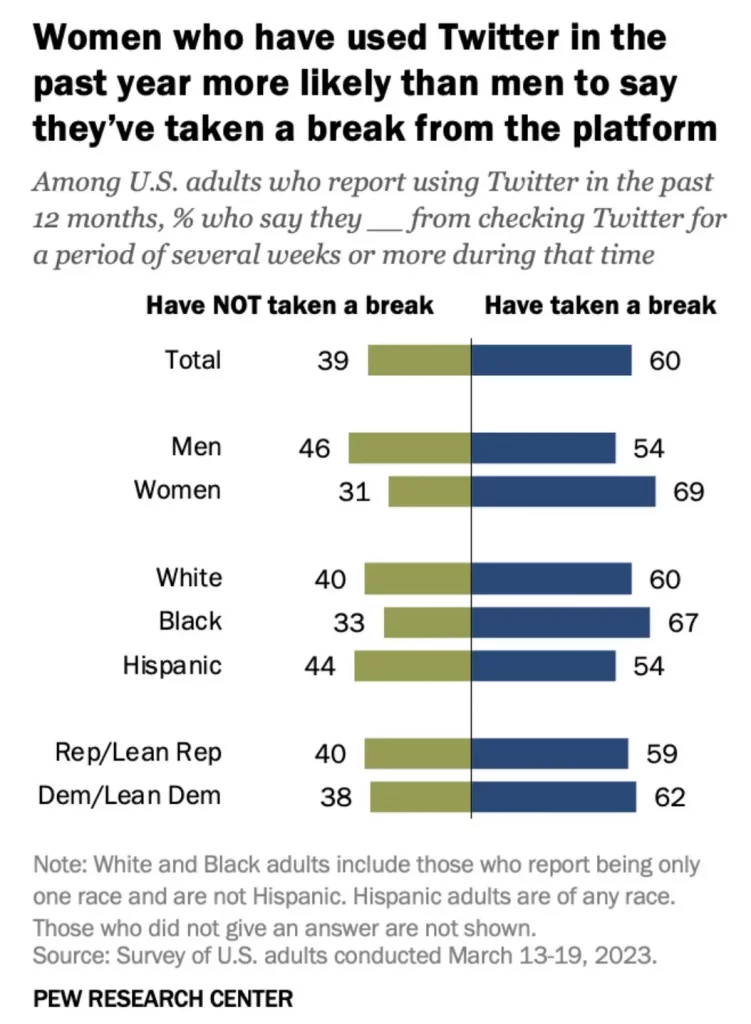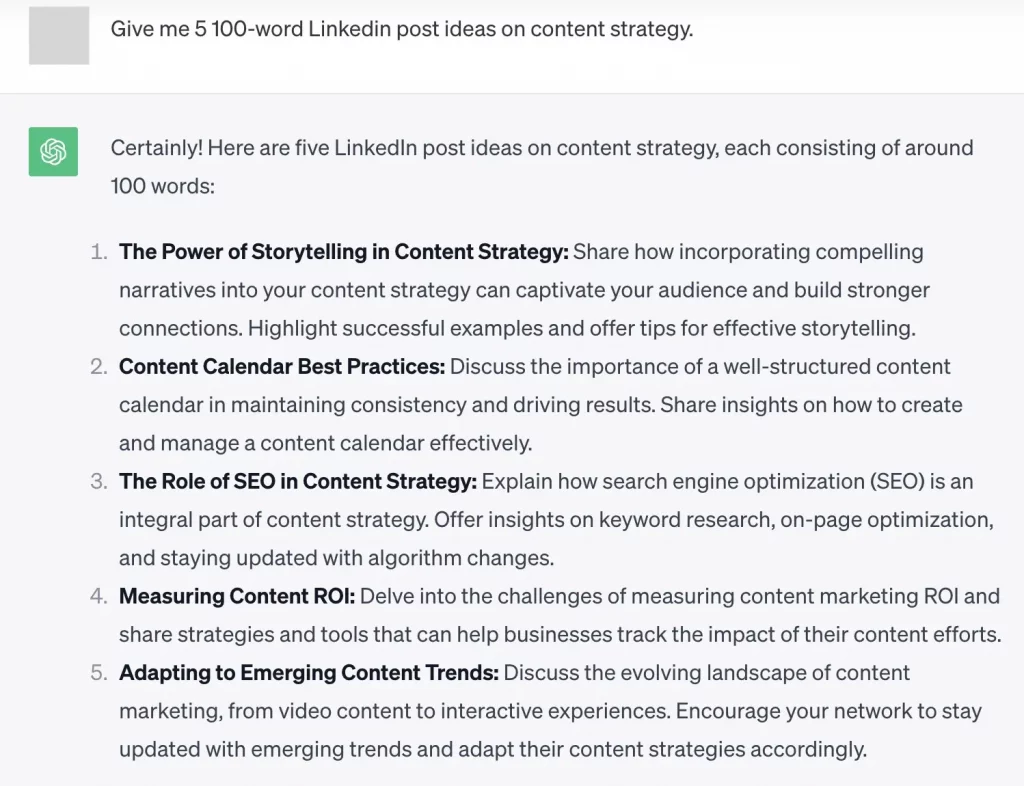In the fast-paced world of marketing, where every move counts, staying ahead of the curve is paramount. As we embark on this journey into the intricate landscape of the industry, it’s crucial to heed the wisdom of those who have navigated its complexities. “In marketing, the only constant is change,” says industry luminary John Doe, encapsulating the essence of the dynamic environment we operate in.

Trends fade and new strategies emerge. Embracing change, backed by data and wisdom, is the key to not only shaping but also staying ahead in the industry. The journey of marketing is dynamic, and with these tips, businesses can navigate the path with resilience and purpose.
Source: Smartinsights
8 Effective Marketing Strategies:
1. Revamp Your Social Media into an Effective Customer Service Hub
Social customer service revolutionizes the way brands interact with customers by leveraging social media platforms to promptly address queries, concerns, or feedback. Transforming your social channels into a responsive help desk allows for real-time conversations, enhancing customer satisfaction.
Consider this: A staggering 60% of customers base their purchasing decisions on the anticipated level of service. Want to stand out from the competition?
Take a cue from industry leader Bestseller, which has seamlessly integrated conversational AI into its social strategy, particularly on Facebook Messenger. Conversational AI enables machines to emulate human text or voice interactions, allowing the AI to receive and resolve queries around the clock.
Bestseller utilizes HeyDay, a conversational AI chatbot, to provide 24/7 customer service on their e-commerce site and Facebook Messenger channels. Through automation, they’ve achieved significant milestones:

- Centralization of Chats: All customer service interactions are consolidated in one location.
- Automated FAQs and Product Search: Equipping customers with automated tools for FAQ resolution and product searches.
- Human Staff Optimization: Human staff is freed up to tackle more intricate issues, while routine queries like order tracking are efficiently handled by AI.
By December 2020, 70% of customers rated the AI chatbot as “excellent,” a figure that rose to 76% just a month later. Notably, the bot’s response time averaged an impressive one minute and 31 seconds, a noteworthy feat when compared to the average response time of 12 hours.
Conversational AI serves as a foundation, but there are additional strategies to enhance the overall customer experience:
- Empathy Training: Make empathy training mandatory for your social marketing team by immersing them in customer service for two to three months. This ensures more empathetic and customer-centric communication, fostering a deeper understanding of customer needs.
- Seamless Online and Offline Experiences: Strive for a unified and consistent customer experience across all touchpoints. Whether a customer inquires about a product’s availability online or inquires in-store, ensure a seamless transition without complications.
- Chatbots for In-Store Traffic: Integrate built-in store locator features within chatbots to assist customers in finding the nearest store and easily scheduling appointments, effectively driving in-store traffic.
2. Leverage Your ROI through Content Repurposing
Content repurposing is the strategic process of adapting existing content for various formats or platforms, maximizing its utility and reach. A prime example is transforming a high-traffic blog post into a podcast episode or vice versa.
According to Semrush’s State of Content Marketing report, 42% of marketers recognize the success brought by updating and repurposing existing content. The benefits are evident – repurposing not only optimizes resource utilization but also enhances the likelihood of connecting with a broader audience.
Buffer, a prominent player in this space, shared its content repurposing strategy. An underperforming TikTok video, for instance, became a springboard for diverse content opportunities. Buffer’s TikTok video turned into text for LinkedIn.

Buffer converted the video into text and shared it on LinkedIn, becoming one of their top posts of the month in terms of impressions and engagement rate. Buffer’s LinkedIn post about their team’s Friday routine with a four-day workweek
Interestingly, the repurposed video garnered more success on Reels (3k views) compared to its performance on TikTok and YouTube Shorts (300 views).

To maximize the potential of your existing content, consider these internet marketing tips:
- Identify Top Performers: Analyze the performance of existing content to pinpoint top-performing pieces that resonate well with your audience for repurposing.
- Mix and Match Formats: Explore diverse formats beyond direct conversions – turn a data-heavy blog post into an infographic, transform a series of blog posts into an ebook, or convert an interview into a Q&A article.
- Update Old Content: Refresh evergreen topics by updating outdated statistics, incorporating new insights, and giving the content a renewed appearance.
- Segment and Serialize: Break down long-form content, such as webinars or extensive guides, into smaller, digestible chunks like a series of blog posts, short videos, or social media snippets.
- Optimize for Each Platform: Tailor repurposed content to align with the best practices of each platform. For example, adapt a YouTube video to be shorter and snappier for TikTok.

3. Harness Employee Advocacy for Genuine Engagement and Social Selling
Employee advocacy involves leveraging a company’s workforce to actively promote and support the brand through personal social media accounts or word of mouth. By turning employees into brand ambassadors, this strategy utilizes their networks to authentically showcase the company’s expertise.
The significance of employee advocacy lies in its organic and authentic nature. A LinkedIn study revealed that despite only 3% of employees sharing content about their company, such shares can boost overall engagement by 30%. Moreover, this type of sharing contributes to building positive brand awareness.
Beyond organic growth, an official employee advocacy initiative can significantly impact sales. According to the same LinkedIn study, 64% of advocates within structured programs believe it plays a pivotal role in attracting and nurturing new business.
For instance, freelance writer Kiran Shahid posted about Grizzle, a B2B SaaS agency, sharing editorial tips.
Kiran Shahid’s LinkedIn post on 4 gamechanging editorial tips she learnt from Grizzle:

This social media post not only imparts valuable editorial insights but also reflects positively on Grizzle’s high editorial standards and the harmonious relationship between writers and editors. Moreover, it provides an insider’s view into the company’s operations, fostering trust, transparency, and a glimpse of its culture for potential customers or employees.
Here are some effective marketing strategies to encourage employee advocacy:
- Incentivize Participation: Offer tangible rewards, recognition, or a points system for employees actively promoting the brand.
- Provide Training and Resources: Conduct workshops, webinars, or provide resource kits with successful post examples, templates, and content ideas to equip employees.
- Ensure Authenticity: Encourage employees to share content aligned with their personal brand and voice, making endorsements genuine and relatable to their followers.
- Set Marketing Goals and KPIs: Clearly define and measure key performance indicators (KPIs) to evaluate the program’s success and identify areas for improvement.
4. Shift Your Focus from Influencers to Content Creators
When considering influencers versus content creators, the pivotal difference lies in their celebrity status. Influencers build their brand around personal appeal or lifestyle, while content creators specialize in specific niches, crafting detailed and valuable content on particular topics.
Content creators establish a genuine connection with their audiences through in-depth insights, how-to guides, and tutorials. This depth, coupled with a niche focus, allows businesses to foster deeper and more authentic engagement.
For instance, Weight Watchers collaborated with content creator Karim, who shares content about healthy recipes, emphasizing that diet food can be flavorful.

The crucial aspect for any brand is identifying the right content creators. How can you achieve this? Utilize the discovery platform Influencer Analytics. This platform aids brands in discovering relevant content creators based on specific requirements.
Connect with influencers across various platforms, accessing granular data such as subscribers, views, likes, posting frequency, and pricing details. To refine your search, employ filters for country, account quality, language, category, and engagement rate. The price filter proves especially valuable for small businesses aiming to implement an influencer marketing strategy on a budget. Whether you seek a tech enthusiast on YouTube or a sustainable living advocate on Instagram, Influencer Analytics’ advanced filters simplify the discovery process.
5. Create Edutainment Content
Edutainment, a fusion of “education” and “entertainment,” involves content creators blending learning with enjoyment to render informative content more engaging.
This approach is effective because it transforms the learning process into an enjoyable and memorable experience for the audience.
Consider this: when was the last time you were genuinely entertained while learning something new? The amalgamation of emotion and information not only ensures retention but also establishes a positive association with the topic.
For instance, Steve Ho (@steveioe) shares comedic yet brutally honest ER skits online.

His “Tips from the ER” content combines humor with health advice, providing bite-sized lessons that entertain and inform. Ho’s satire challenges the stereotype that medical information must be dry and tedious, making his audience more receptive to advice they might otherwise overlook.
Here are some tips for creating educational content:
- Identify Target Customer Interests: Tailor content to address your target audience’s interests and pain points, packaging information within a captivating narrative or engaging format.
- Incorporate Engaging Elements: Use humor, storytelling, or interactive features to enhance engagement. Visual aids such as graphics, animation, or props can simplify complex ideas.
- Opt for Concise Formats: Utilize short-form videos to ensure creators are punchy and impactful in delivering edutainment.
6. Create Valuable, Original Content
Crafting content that is both valuable and original positions your brand as an authoritative voice, fostering repeated visits from readers.
Original content encompasses research reports, thought leadership articles, in-depth case studies, and personalized tutorials. These content assets not only provide deeper insights but also deliver actionable takeaways for the audience.
Take CXL’s blog as an example, featuring detailed guides, industry analyses, and expert interviews on conversion optimization, digital marketing, and user experience.

The posts within this blog often present real-world examples supported by data and research, ensuring that readers gain both theoretical knowledge and practical strategies they can immediately apply.
Before publishing content, ask yourself these questions to ascertain its value and originality:
- Alignment with Brand Values: Does your content reflect and uphold the core values of your brand?
- Consistency in Tone: Is the tone of your content consistent, matching your brand’s identity and meeting audience expectations?
- Relevance to Target Market: Does your content address challenges and answer questions relevant to your target market?
- Uniqueness and Expertise: Are you sharing firsthand expertise and genuine knowledge, or are you echoing what’s already available?
- Clarity of Topic: Does your content revolve around a clear topic, aligning with your site or channel’s well-defined purpose that resonates with your audience?
- Educational Value: Does your content educate or inform your readers?
- Reader Enrichment: Will your readers feel enriched, informed, and satisfied after consuming your content?
By adhering to this checklist, you ensure that each piece of content aligns with your brand’s vision while meeting the needs and expectations of your audience.
7. Build an Email List
An email list serves as a compilation of individual email addresses, allowing brands to establish direct communication with their audience without relying on third-party platforms.
The significance of an email list lies in its status as an owned asset, offering protection against the uncertainties of third-party platforms. The unpredictability of these platforms was evident in May 2023 when 60% of U.S. Twitter users took a break following Elon Musk’s takeover, leading to a subsequent surge in rival platform Threads with 70 million users in two days.

Such rapid shifts underscore the volatility of depending solely on third-party platforms, where years of invested effort can be disrupted overnight. Maintaining an owned email list establishes a direct and secure connection with the audience. Litmus, an email marketing testing company, exemplifies effective list-building strategies.
Litmus engages its audience through a weekly newsletter, offering actionable tips tailored to its target audience.

Additionally, Litmus employs lead magnets—enticing offers or resources such as ebooks or templates provided in exchange for an individual’s email address. This approach is successful because it provides immediate value, addressing the specific needs or interests of the audience and encouraging voluntary sharing of contact details.
Litmus leverages research reports, such as “The 2023 State of Email Workflows Report,” to attract subscribers with the latest data. This not only adds value but positions Litmus as a thought leader and authority in the industry. By adopting a diverse approach, Litmus systematically builds a robust email list, keeping its audience informed and engaged while organically showcasing its latest product offerings.
Leanr how to grow your email list here.
8. Utilize AI to Enhance Your Operations
Incorporate AI tools into your workflows to accelerate tasks, fostering prompt decision-making and efficient operations.
AI gained widespread prominence in 2023, with machine learning algorithms assisting businesses in various marketing endeavors.
Marketers, on average, spend nearly one-third of their time on repetitive tasks. AI marketing tools play a pivotal role in expediting these routine responsibilities, facilitating tasks such as data analysis, content creation, campaign automation, and strategy optimization.
Explore the following AI tools for enhanced efficiency:
- Creative Automation Tools
These tools automate the design process for ads, banners, and promotional materials, ensuring consistency and time savings.
Example: Hunch provides data-driven creative solutions for ads, while Abyssale automates banner production for digital campaigns.

- Copywriting Tools
AI-powered algorithms generate, enhance, or optimize written content for various platforms and audiences.
Example: Jasper can produce high-converting ad copies dynamically, and ChatGPT generates conversational content for chatbots and customer interactions.

- Social Media Tools
These AI-powered tools support social media management tasks, encompassing content scheduling, performance tracking, and ad optimization.
Example: Celtra offers creative automation for social and digital advertising, optimizing visuals and placements across diverse platforms.

However, it’s crucial to acknowledge that the effectiveness of AI relies on human oversight. Tracey Wallace, Director of Content at Klaviyo, emphasized the need to revamp the content production process during a session with Omniscient’s Alex Birkett.

The AI-enabled process involves building upon human contributions, emphasizing the collaborative relationship between AI and humans.
While AI tools streamline marketing processes, human guidance remains essential for goal setting, strategy definition, and ensuring ethical and responsible usage.
Conclusion:
As we conclude our exploration of the marketing tips shaping the industry in 2024, it’s evident that adaptation and innovation are at the forefront of successful strategies. Embracing the power of AI, prioritizing authentic content creation, and tapping into emerging platforms are just a few examples of the dynamic landscape that marketers need to navigate. The key lies in a proactive approach, continuous learning, and a willingness to experiment with novel ideas. By integrating these insights into their practices, businesses can not only keep pace with industry shifts but also position themselves as leaders in the marketing world.
FAQs on Marketing Strategies of 2024:
What role does content creation play in modern marketing?
Content creation is a cornerstone of modern marketing, providing businesses with a platform to engage, educate, and build authentic connections with their audience. Valuable and original content establishes authority and fosters brand loyalty.
How can businesses justify their content marketing spend?
Demonstrating the tangible value and return on investment (ROI) of content marketing efforts is crucial. Metrics aligned with the brand journey, detailed reports, and clear presentations help secure buy-in from decision-makers.
How does gamified user experience contribute to marketing success?
Gamification adds an element of enjoyment and achievement to non-game activities, making the learning or interaction process more engaging. For instance, Duolingo’s success is attributed to the addictive nature of its gamified language learning approach.
How does growth hacking contribute to business growth?
Growth hacking involves innovative, cost-effective strategies to achieve rapid business growth. It often focuses on quick experiments, unconventional tactics, and leveraging existing resources for maximum impact.
How can businesses leverage Product Hunt for a successful product launch?
Product Hunt offers a vibrant community for showcasing new tech products. Strategies such as pre-launch engagement, choosing the right Hunter, offering exclusive incentives, and real-time interaction contribute to a successful launch on the platform.



